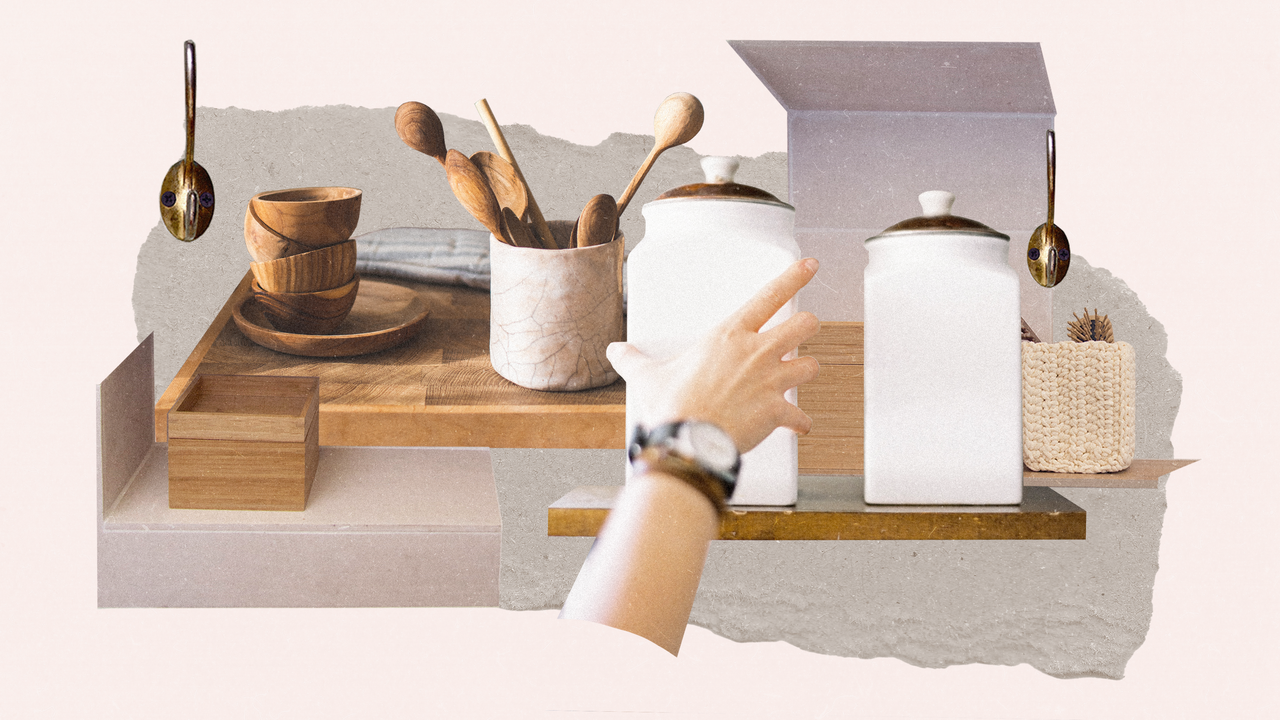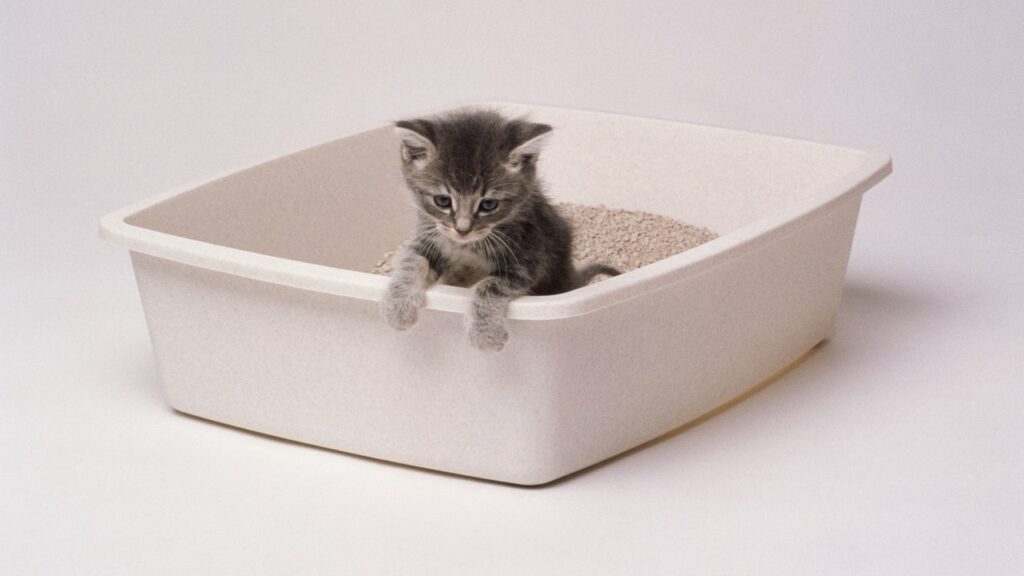If you’ve ever wondered how to declutter your home, you know that cleaning out junk can be a real bust. Where to begin? And how much to do? You may think that deep cleaning everything from the hidden space behind the blinds to reorganizing every single closet in the house is in your near future. But in reality, there are key areas to focus on to make a tidier space overall as opposed to clearing out every nook and cranny—because that can wait until official spring cleaning routines kick in.
To declutter your home room by room, zero in on the important problem areas. Doing so can make a major difference and render a breezier vibe in your home. For all the best advice, AD reached out to five professional organizers for their best advice so you can crack down (and then tackle) the worst clutter zones in each room.
The Problem: Piles of coats and shoes in the mudroom
Solution: Remove out-of-season coats and accessories. Pop in more storage systems
The mudroom is often a hot spot for clutter. “The clutter problem here is that [the mudroom] technically is where things like coats, backpacks, shoes, and grab-and-go items are stored during busy weeks,” says professional organizer and founder of Simply Dare Kenzie Harkey. According to Harkey, a lot of what she sees in her clients’ homes is that people tend to allow this area to pile up without resetting it weekly. “Eventually, there’s too much stuff stored in the space,” she explains. “One rule I have for clients with these spaces is to clean it out once a week.” All it takes is 5 to 10 minutes to clear out unnecessary garb as the seasons change—heavier coats, for example, can be packed away in the basement or garage once winter ends. If you can remove these items, you can then open up some space, allowing for more wiggle room for empty shelves and other areas. These can then become spots for mail, packages, or stuff you need to return or deliver elsewhere.
However, if your mudroom or entryway is on the smaller side, take this as an opportunity to add in extra storage. Consider adding a separate drawer system for those unruly shoes, dog leashes, and other accessories that seem to pile up. If this area also doubles as a cleaning supply or homewares drop zone, Harkey suggests popping in extra racks or a broom holder. In other words, think about ways to get these items you might not use every day off the floor and tucked away. “That kind of stuff piles up if there’s not a designated area to store them until you get to that task.”
The Problem: Home offices and workstations cluttered with electronics and more.
Solution: Consolidate and hide your cables and cords. Place your paper documents in a cloud-based library.
As many of us have switched to remote work or flex work arrangements, it’s only natural if the home office has become one of the messiest rooms in your house. “Home offices are now likely to include both desktop and laptop computers with multiple monitors, docking and charging stations, and other electronics including TVs,” says Elizabeth Dodson, who created one of the country’s first digital home management platforms in 2012 as a response to the piles of paper clutter around her home.
But an easy way to do away with all this mess is to hide your cables and cords with the electronic consolidation products. “Cable management,” says Dodson, “has become a popular go-to category on Amazon and elsewhere as more homeowners opt for an electronic clutter-free workspace.” All these products are quite easy to install. She also recommends subscribing to a digital home management software, like HomeZada, that can organize and store all your paper documents in a cloud-based library. This way, she says, you can also virtually document all your personal possessions through receipts, photos, and videos for tax and insurance purposes. “Not only is a paperless office less cluttered and stressful, it reduces your carbon footprint.”
The problem: Overcrowded coffee table
Solution: Create a designated drop zone
While magazines and “coffee-table” books tend to stack here, other items around the house can land on the coffee table as well, causing clutter. “The biggest way around this is to make sure you have a system in place,” says organizing expert Ashley Jones in Houston, Texas . But it doesn’t have to be a complicated one. “It could be as simple as purchasing a magazine rack to collect magazines into one area or setting up a mail collection drop zone.” If possible, choose a storage ottoman to place bigger items inside like throw blankets.
At the same time, place intentional decor on the coffee table to discourage everyday items from collecting. “Choose items that are bigger in scale and take up roughly 80% of the surface, rather than smaller trinkets to cover the entire surface of the table,” recommends professional organizer and organizational designer Lisa Eckerle of Sort Support in Indianapolis. “You shouldn’t use more than three or four items in total.” Stick to sizable pillar candles (like these fun Hay color-blocked candles), a bowl with decorative fillers, or even some nice tchotchkes.
The problem: Overstuffed kitchen drawers
Solution: Opt for a decorative crock and dividers
The proverbial stuffed kitchen drawer. Sigh. It seems everyone has a drawer brimming with cooking and baking utensils that clink and clank whenever someone tries to open it. The solution? A decorative crock filled with utensils, cut in rustic wood tones to echo cottagecore and modern farmhouse vibes, is a great piece to have in the kitchen. It adds warmth and function to the heart of the home, Eckerle says.
Turning back to the packed drawer, you can create a simple way to tidy this up too by employing kitchen organization techniques. “I love to use drawer inserts or dividers to keep the contents of drawers and cabinets organized,” says certified professional organizer Shannon Tamme of Life Synchronized in St Louis, Missouri. In fact, storage bins and other tools can help you create neat sections. “Categories are key to keeping order,” Tamme says. “Baking, snacks, pastas, canned goods—place these items together and try to keep the most used items at a reachable level.”
The problem: Clothes piles in the bedroom
Solution: An accessible closet
Sometimes rehanging clothes feels like too much work. That’s why it is much easier to place them on the bedroom’s armchair than venture into the wardrobe war zone. Get to the root of the problem: Make your closet a cinch to get to (and keep it that way), experts say. “Place a basket on the floor of your closet to throw in ‘not dirty, not clean’ clothes, such as sweatshirts, jeans, and the like,” Eckerle says. However, remember this important tip. “Ensure the basket isn’t too deep or large that you have to rifle through it or forget what’s in there,” she adds.
Another option is to hang decorative hooks on the wall inside the closet. Not only will they be a landing spot for semi-clean clothes, the hooks give you “a visual reminder” to place the pieces here instead of flinging them onto a chair, Jones advises. If you have space, allocate some hooks for jewelry organization as well. And as for the chair itself, Eckerle says there’s a simple hack to trick your mind out the cloths-dumping habit. “Cover it with a decorative pillow and blanket,” she says. “It will give the illusion that the chair is full, and you won’t throw something onto it.”
The problem: Cramped space under the bathroom sink
Solution: Get stackable drawers and divided turntables
It’s a simple everyday dilemma in the bathroom: using a product (beauty or otherwise), and immediately pushing it back into the cabinet under the sink. Though the random assortment of items seems harmless at first, it can lead to an avalanche of expired creams, multiple purchases, and a frantic search for cotton balls.
The good news is that there’s a quick fix to decluttering your messy little secret. “The trick is to use a combination of stackable drawers and divided turntables,” Eckerle says. “For most bathrooms, the formula is to do two stackable drawers on the right or left, a turntable in front of the main pipe, and then a deep plastic bin on the other side that can act like a pullout drawer for taller bottles, sprays, and cans.”
Jones also lauds a lazy Susan as one of the top bathroom organizational hacks. “We typically only see this product in kitchens and pantries, but they work really well in bathrooms too if you have the space, especially for hair sprays and products that are typically in taller bottles.” Plus, being able to shift through things quickly via lazy Susan, she says, allows her to weed out any expired products.









